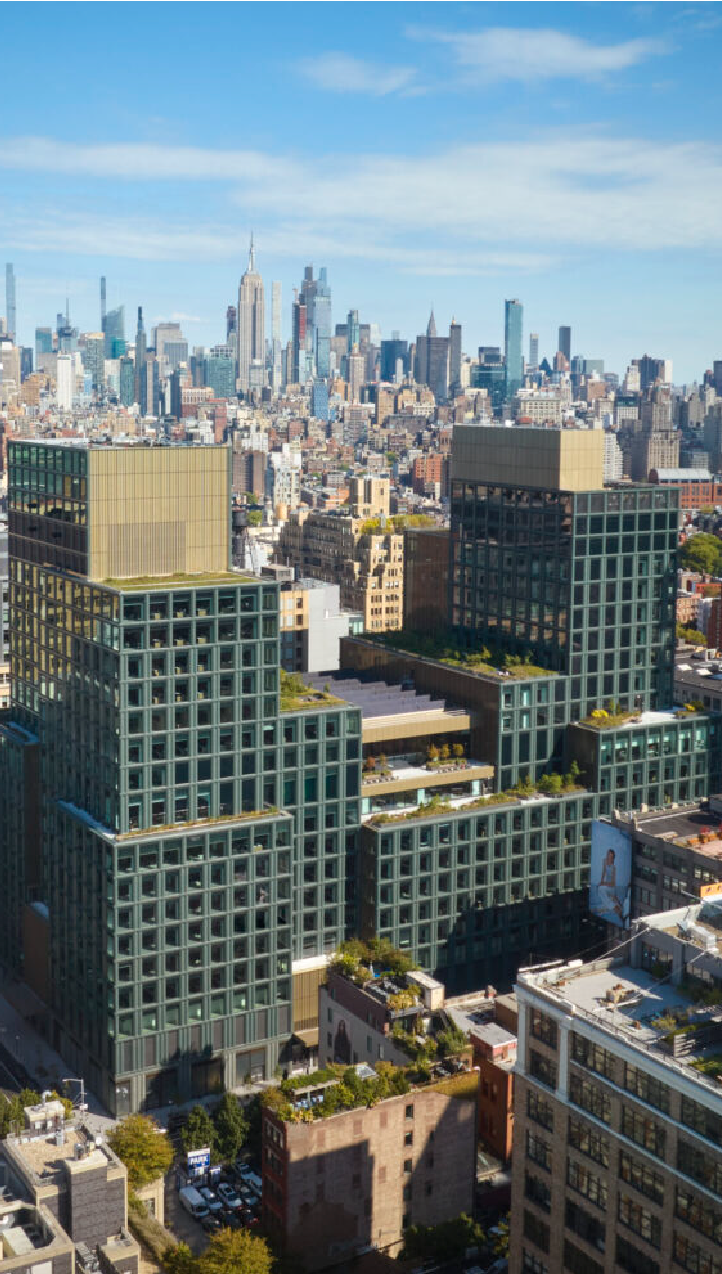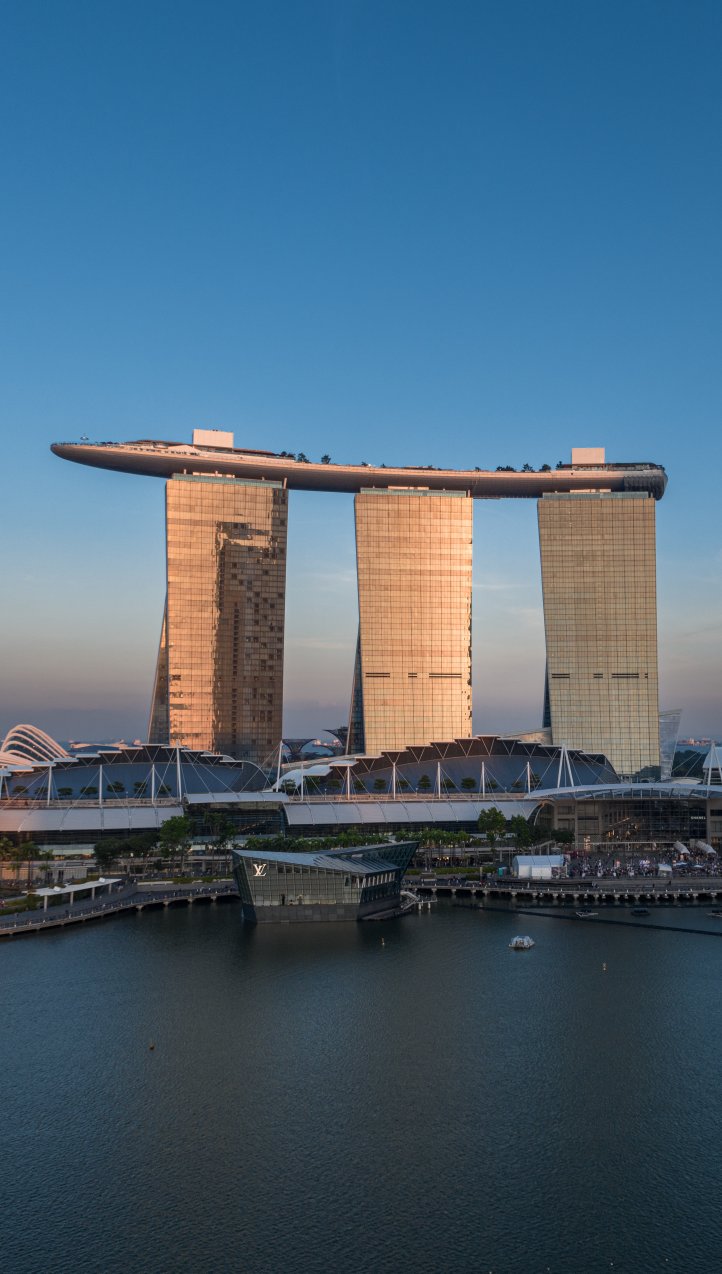Much More Than a Campus: The Google Bay View campus is a New Blueprint for Architecture
When a company like Google builds its first ground-up campus, you know it won’t be ordinary. But what they delivered in Mountain View, California goes beyond even their own reputation for innovation. Designed by Bjarke Ingels Group (BIG) and Heatherwick Studio, Google Bay View isn’t just a workplace-it’s a manifesto for the future of green architecture.
This 1.1 million-square-foot solar-powered campus sits on a 42-acre site within the NASA Ames Research Center. It includes two massive office buildings, an event center, and 240 short-term accommodations for employees. From the shape of its canopy roof to the way it handles water and air, Bay View is a living, breathing example of sustainable, adaptable, and user-centric design.
So what makes this futuristic campus so impactful for architects, developers, and design lovers? Let’s take a closer look.
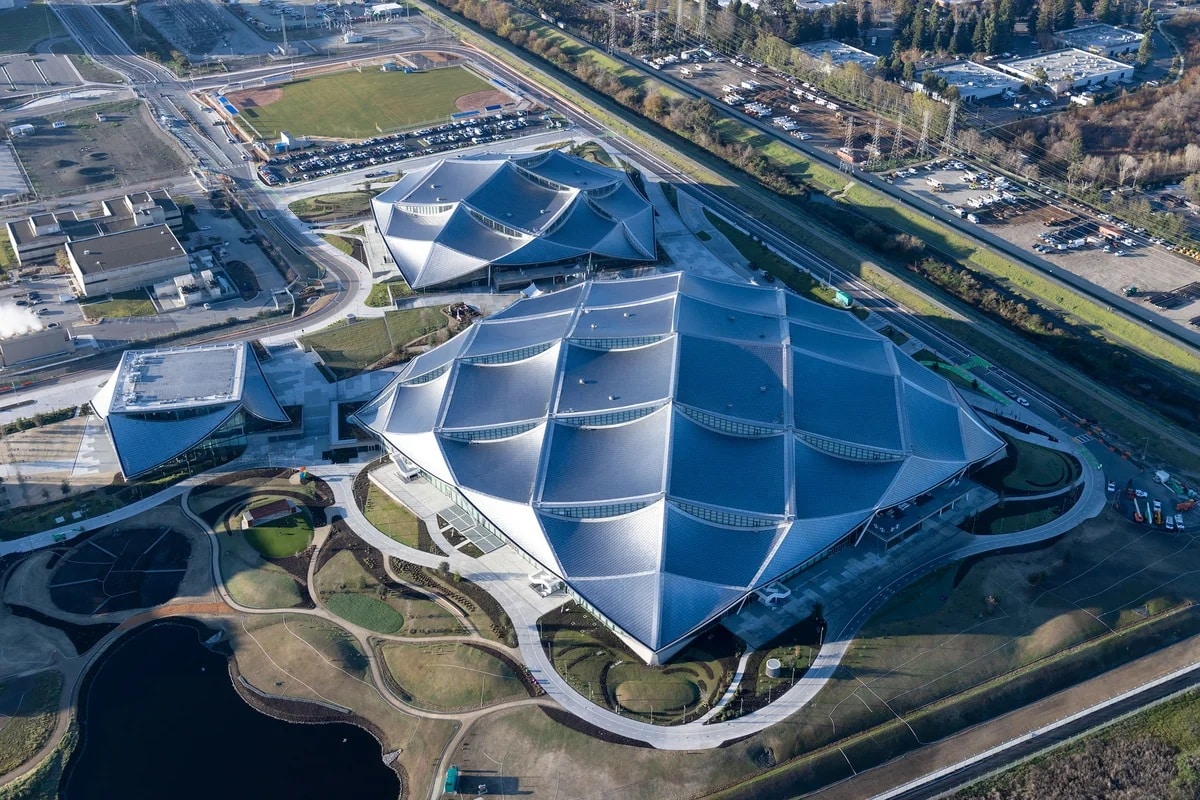
From Code to Concrete: How Did the Google Bay View Campus Come to Life?
Google wasn’t just looking to build another Silicon Valley headquarters. They wanted to challenge the very concept of the workplace. Their goal? A flexible, human-focused campus that adapts to fast-paced technological change while minimizing environmental impact.
Bay View became the company’s first fully custom-built campus—a true blank canvas. Collaborating with BIG and Heatherwick Studio, Google placed a heavy emphasis on health, light, air quality, acoustics, and connection to nature. The three buildings are low-slung, dome-like structures that blend with the environment rather than dominating it.
The masterplan encourages walking and biking, opening up to the public through the Bay Trail, while also integrating restored wetland habitats.
The Dragonscale Roof: A Solar Skin That Generates Power and Style
Let’s talk roofs. Because this one turns heads.
Google Bay View’s signature canopy is clad in 50,000 shimmering photovoltaic tiles—custom-designed solar panels that resemble dragon scales. Not only do they create a dramatic visual identity, but they also generate nearly 7 megawatts of electricity. That’s about 40% of the campus’s total power needs.
Combined with local wind farms, the campus operates on 90% carbon-free energy. And yes, Google is aiming for 24/7 carbon-free energy usage by 2030. This isn’t just a design statement—it’s a strategy for net-zero operations.
The canopy itself is more than a skin. It’s engineered for daylight control and energy performance, with clerestory windows that bring in soft, diffused light and reduce the need for artificial lighting.
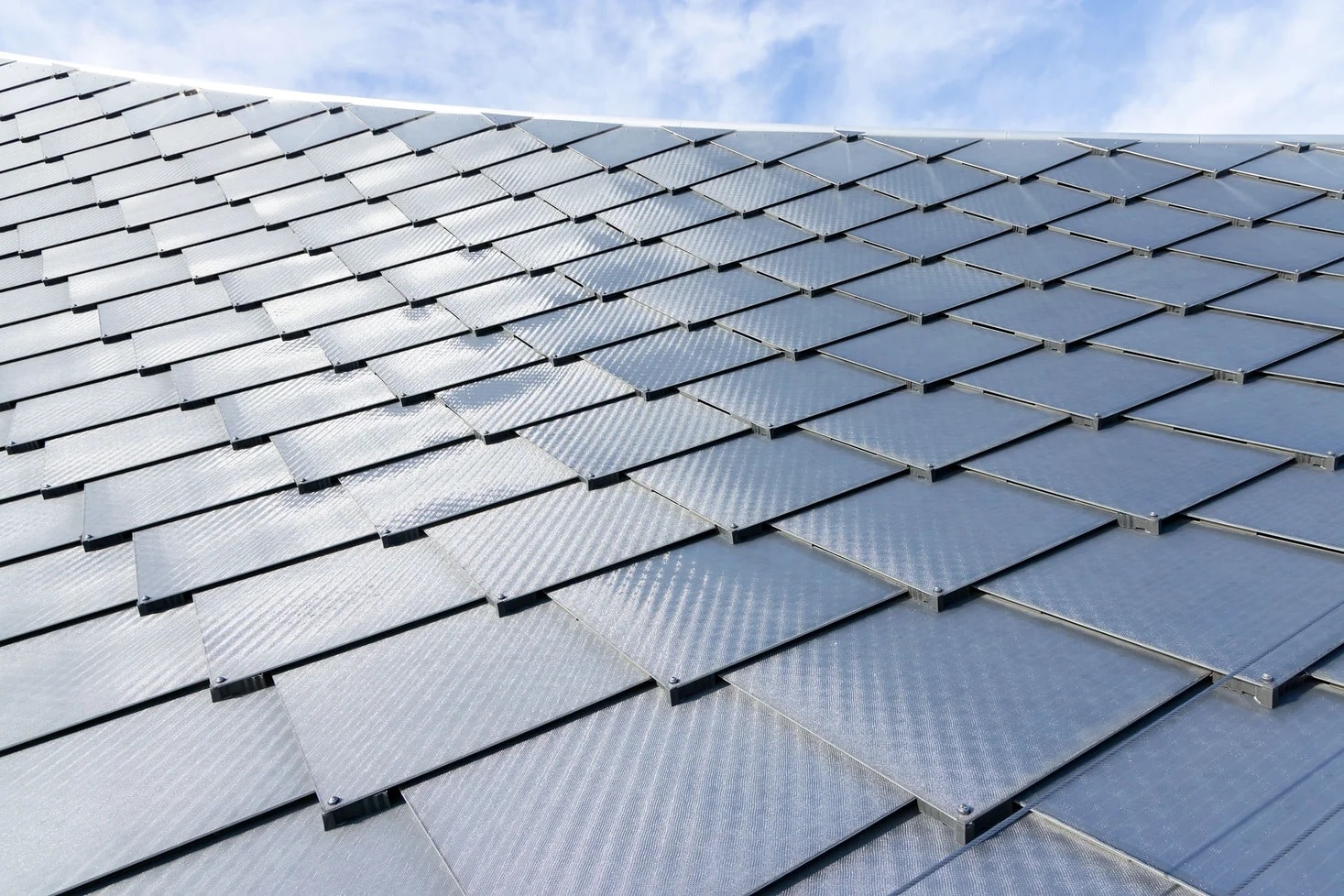
Designed for Life: Biophilia, Wellness, and Human-Centered Interiors
Every detail inside Google Bay View points back to one thing: people.
From day one, Google prioritized employee well-being. The workspace integrates biophilic design principles: daylight in every corner, expansive outdoor views from every desk, and a material palette free of toxins. (Yes, everything from carpet to plywood was vetted against the Living Building Challenge Red List.)
The HVAC system pulls in 100% outside air, far above the industry average of 20-30%. Window shades adjust automatically throughout the day to maximize comfort and light balance.
Oh, and don’t forget the local artwork. Google’s Artist in Residence program brought in Bay Area artists to create pieces that connect the space to its natural surroundings while serving as intuitive wayfinding elements.
Smart Flexibility: How to Organize the Office of the Future
Imagine a building that adapts to your team’s size, project type, and mood. Bay View does exactly that.
The upper floor is divided into small “neighborhoods” separated by courtyards and connected by ramps. These platforms act like giant pieces of furniture: reconfigurable, movable, and ready to evolve.
Downstairs? Social areas, cafes, conference rooms, and gathering spaces. The layout separates focus from collaboration without cutting off interaction. It supports deep work and spontaneous meetings—without forcing one to compete with the other.
And all of it under the sweeping roof structure, which removes the need for interior columns and opens the space up visually and physically.
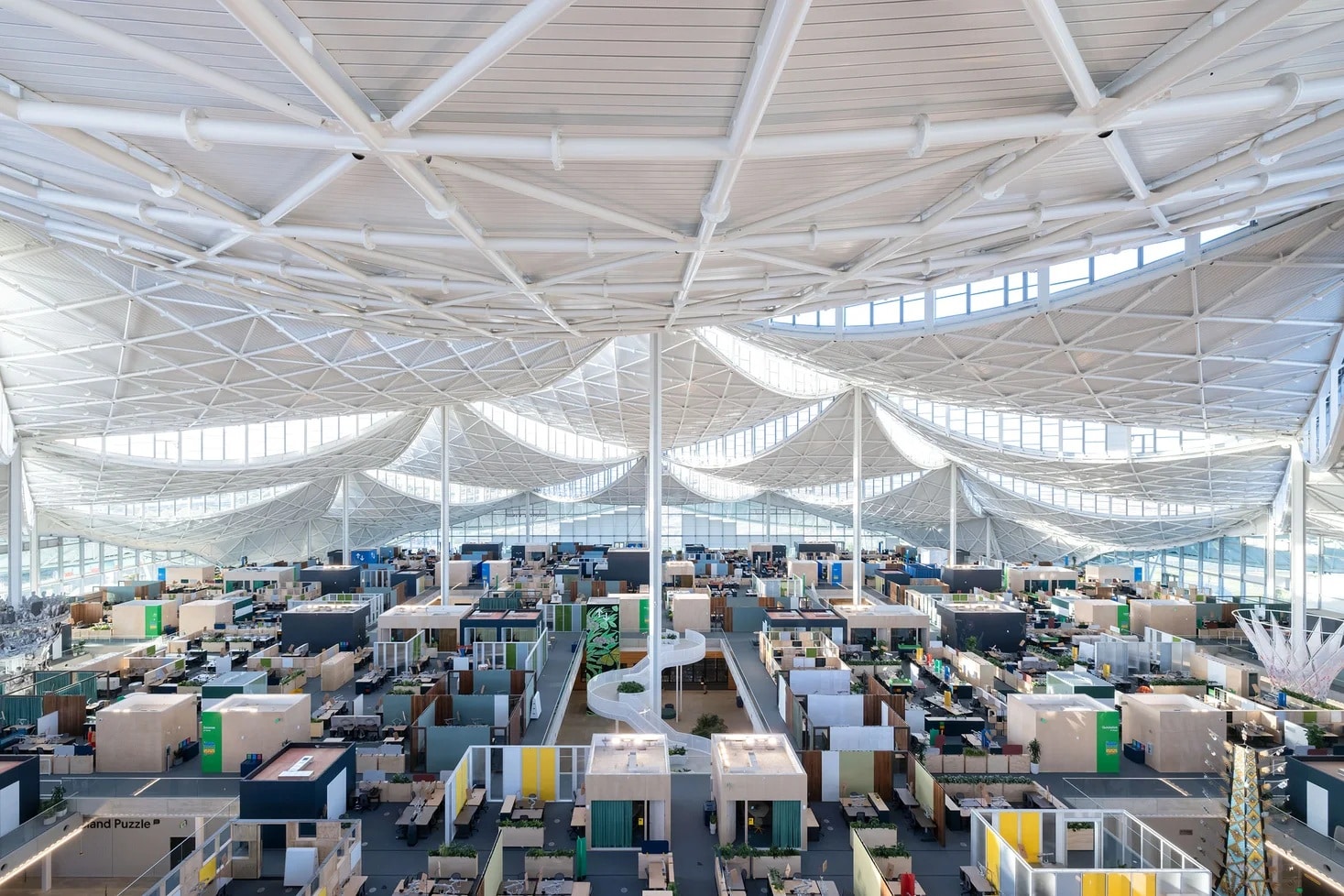
Water, Earth, and Tech: Engineering a Regenerative Campus
Google Bay View is a net water positive campus, meaning it treats and reuses more non-potable water than it consumes. All stormwater and wastewater are captured and filtered on-site. This reclaimed water is then used for cooling towers, flushing toilets, and irrigating the landscape. Above-ground ponds not only support these systems but also aid in natural habitat restoration, creating wetlands and ecosystems that were previously lost to development.
But what truly sets Google Bay View apart is its geothermal system—the largest of its kind in North America.
Instead of using traditional cooling towers that rely on massive amounts of water, Bay View’s buildings are heated and cooled using a closed-loop geothermal system embedded directly into the structural foundation. In collaboration with Integral Group and Southland Industries, engineers embedded approximately 100 miles of geothermal piping within the building’s cast-in-place structural piles. These pipes circulate fluid that transfers heat between the buildings and the Earth’s natural thermal mass.
During summer, excess heat is absorbed from the building and stored underground. During winter, that same thermal mass helps warm the campus. The system is four times more efficient than a conventional electric boiler, doesn’t burn any fossil fuels, and uses 90% less water compared to standard cooling towers. Most importantly, it plays a significant role in reducing Bay View’s annual carbon emissions by nearly 50%.
This geothermal innovation was chosen after extensive geo-energy feasibility studies, outperforming alternative concepts like shallow loop fields and open-loop systems. Integrating the geothermal network into the building’s core structure allowed for exceptional thermal efficiency without compromising the design vision.
The result? A regenerative campus that filters its own water, controls its internal climate from the ground up, and offers 17.3 acres of restored native landscapes—all while pushing the limits of green architecture and environmental design.
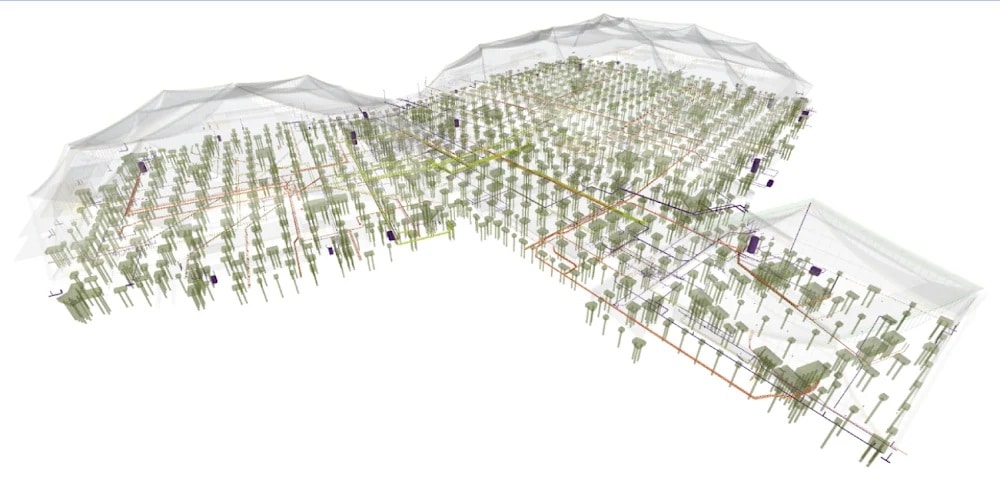
Why It Matters to Architects
Let’s face it—most architecture firms aren’t operating with Google-level budgets or teams of global collaborators. But that’s exactly why the Google Bay View Campus is so relevant. It’s not just an inspiring project; it’s a case study in how sustainable thinking, smart design, and long-term value can—and should—be scaled.
Here are a few lessons worth bringing into your next project:
-
Passive design isn’t optional—it’s foundational. From natural daylighting to ventilation strategies, Bay View maximizes what the site offers. Consider how your building orientation, window placement, and insulation choices could work with the environment, not against it.
-
Solar can be beautiful. The dragonscale solar skin isn’t just efficient—it’s iconic. Renewable energy doesn’t have to compromise your design vision. In fact, when it’s fully integrated, it enhances the architecture.
-
Design flexibility is now a necessity. Bay View’s modular “neighborhood” floor plan reflects a major workplace trend: adaptability. Offices, schools, even homes need layouts that can shift with user needs over time—without needing to tear down walls.
-
Well-being is performance. Biophilia, toxin-free materials, and access to views aren’t luxuries. They’re evidence-based contributors to productivity, health, and user satisfaction. Sustainable design is human-centric design.
-
Think systems, not just buildings. Bay View’s geothermal foundation, water-positive strategy, and habitat restoration aren’t separate features—they’re interconnected. The project functions like an ecosystem. Architects today must design not just for beauty, but for performance and regeneration.
Google Bay View shows us what’s possible when environmental performance and user experience are given equal weight. It’s not about copying the form—it’s about understanding the principles and applying them across scales.
Visualizing the Sustainable Future: The Role of 3D Rendering in Projects Like Bay View
Before any of this became reality, it had to be visualized.
Massive campuses with solar skins, energy piles, and flexible interior platforms require buy-in from a lot of people—clients, consultants, stakeholders, and even the public. That’s where 3D rendering steps in.
At Xpress Rendering, we work with architects, developers, and home builders across the U.S. to bring visionary designs to life—before a single beam is installed. Our renderings help communicate green architecture concepts clearly and emotionally, whether it’s a LEED-certified house or a multi-building campus.
Are you designing a sustainable space that deserves the spotlight? Let’s visualize it together. Get a quote and start showing what your project can do for people and the planet.
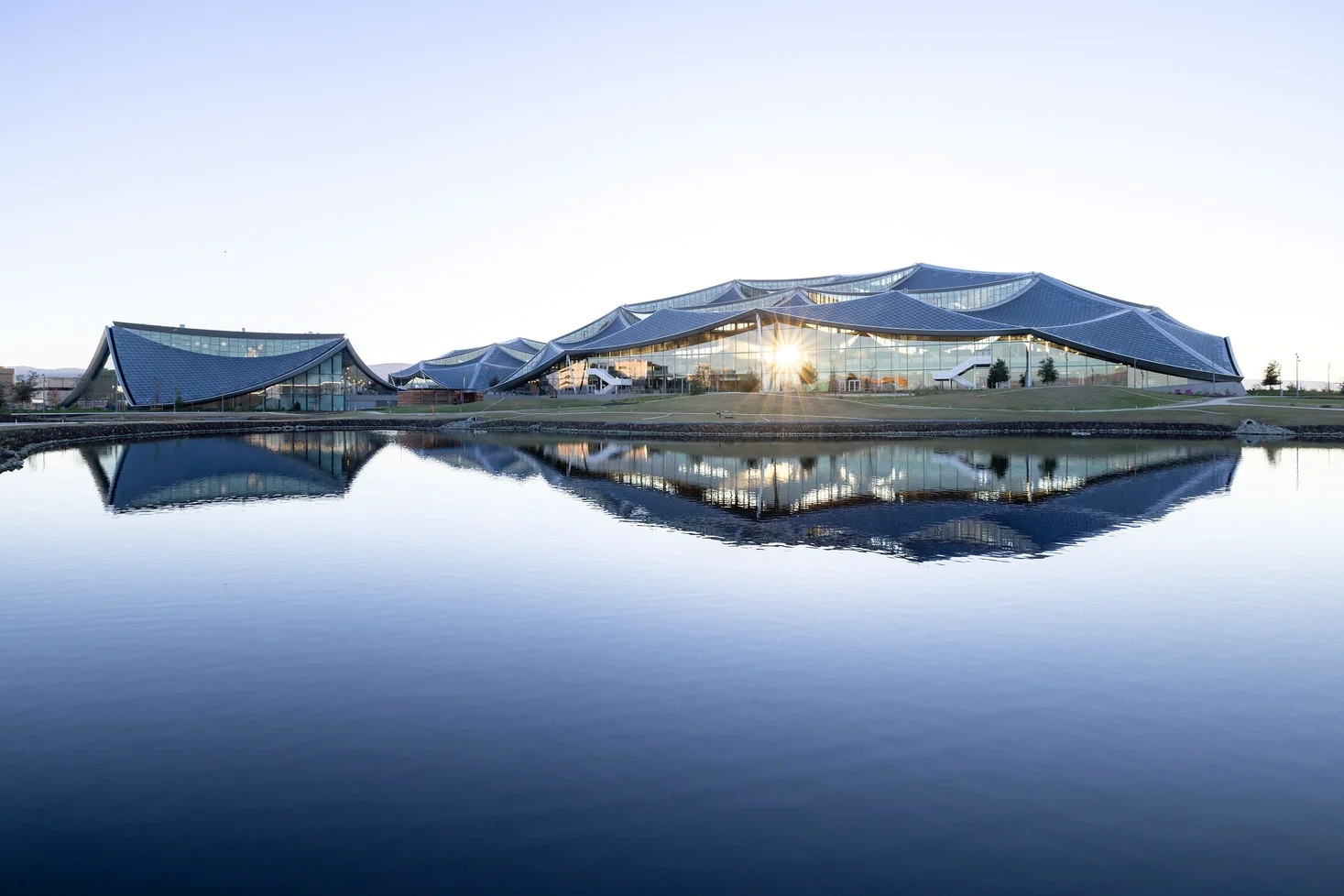
Frequently Asked Questions (FAQs)
-
Where is Google Bay View Campus located?
Google Bay View Campus is situated in Mountain View, California, on a 42-acre site within the NASA Ames Research Center. The location offers a unique setting that blends advanced technology with environmental stewardship, allowing Google to restore native wetlands, provide public access to nature via the Bay Trail, and integrate sustainable systems into the natural surroundings.
-
What makes the roof design so special?
The campus features a groundbreaking “dragonscale” roof made of 50,000 custom-designed curved photovoltaic panels. These shimmering solar tiles not only provide a bold architectural statement but also serve a critical environmental function—generating nearly 7 megawatts of electricity. The design maximizes solar efficiency while allowing natural daylight to filter in through strategically placed clerestory windows. It’s a seamless integration of form, function, and sustainability.
-
How does the campus reuse water?
Bay View is a net water-positive development, meaning it produces more usable non-potable water than it consumes. The campus captures all stormwater and wastewater, treats it through on-site filtration systems, and repurposes it for cooling towers, flushing toilets, and irrigating the surrounding landscape. This closed-loop water strategy drastically reduces municipal water use and supports habitat restoration efforts.
-
What sustainable design principles were applied?
Google Bay View applies a wide range of sustainable design strategies rooted in human well-being and ecological balance. These include:
-
- Biophilic design to enhance connection with nature
- Natural ventilation with 100% outside air
- Dragonscale solar panels for renewable energy generation
- Geothermal heating and cooling through North America’s largest energy pile system
- Modular and flexible interiors that adapt to changing work needs
- Red List-free materials to ensure a toxin-free environment
- Native landscaping and habitat restoration to support biodiversity
-
What certifications is the campus pursuing?
The Google Bay View Campus is targeting LEED-NC v4 Platinum certification—the highest level offered by the U.S. Green Building Council. It is also on track to become the largest project ever certified by the International Living Future Institute under any of its programs. Specifically, it is aiming to achieve the Water Petal of the Living Building Challenge, recognizing its commitment to water reuse, conservation, and ecosystem regeneration.
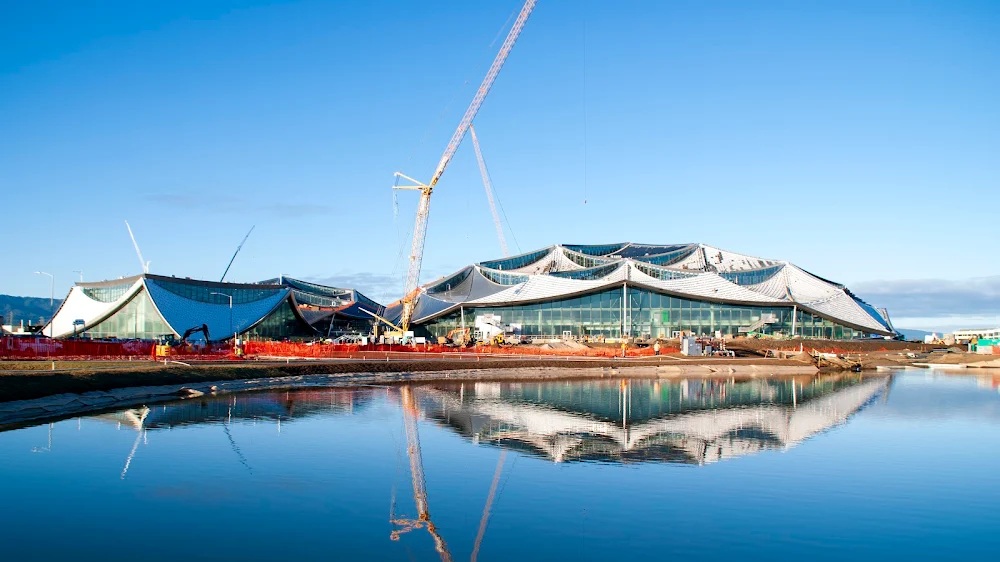
Final Thoughts about Google Bay View: The Future of Design Is Already Here
Google Bay View Campus is not a sci-fi fantasy. It’s real, it’s functional, and it’s operational. Most importantly, it proves that green architecture isn’t just possible—it’s essential. To learn more about this architectural masterpiece, visit the official Google Bay View website.
For architects, developers, and designers looking to elevate their work, this campus is a clear inspiration. It’s proof that when design, technology, and sustainability work together, the result isn’t just beautiful—it’s transformational.
If this is the future, let’s design it together.
